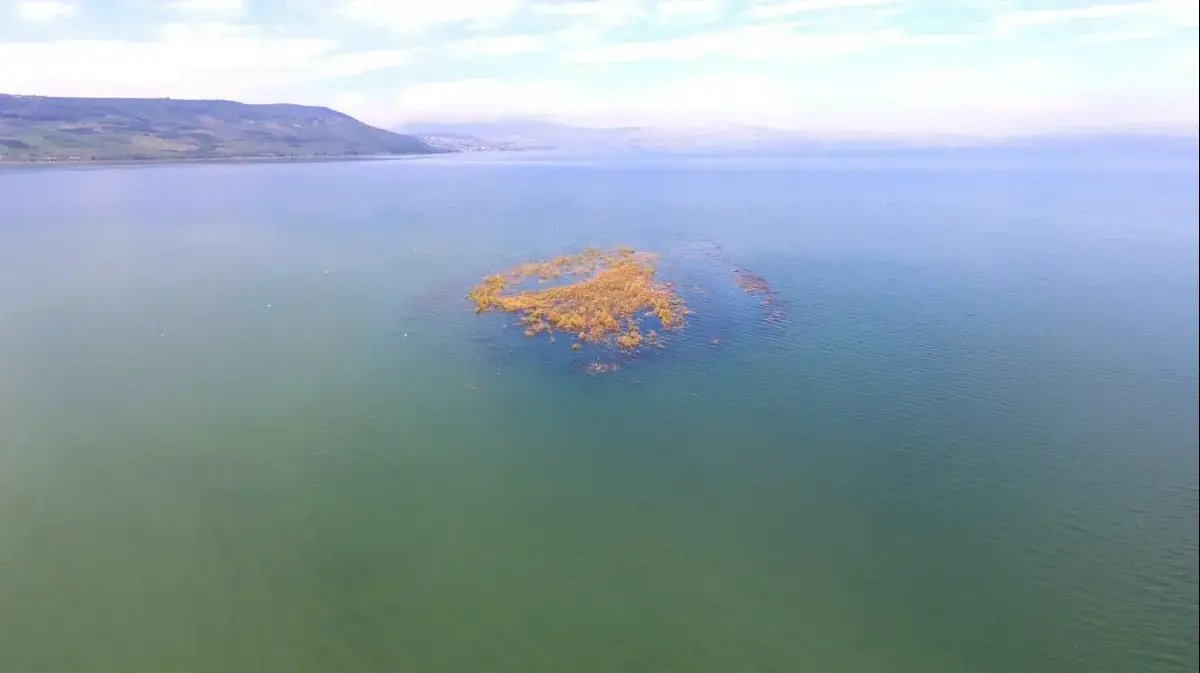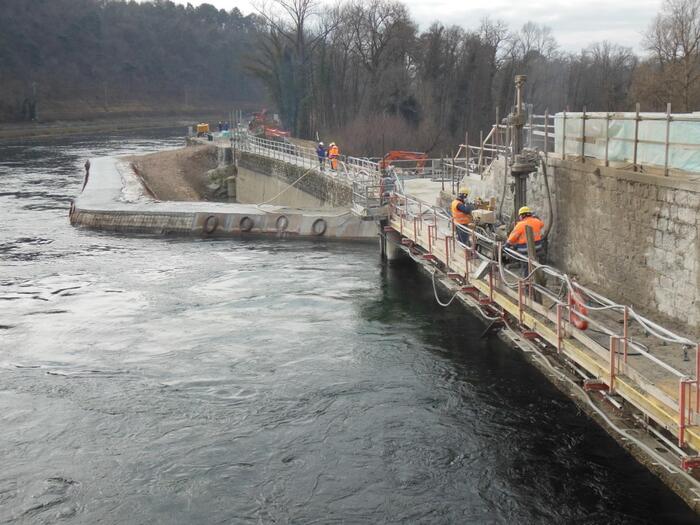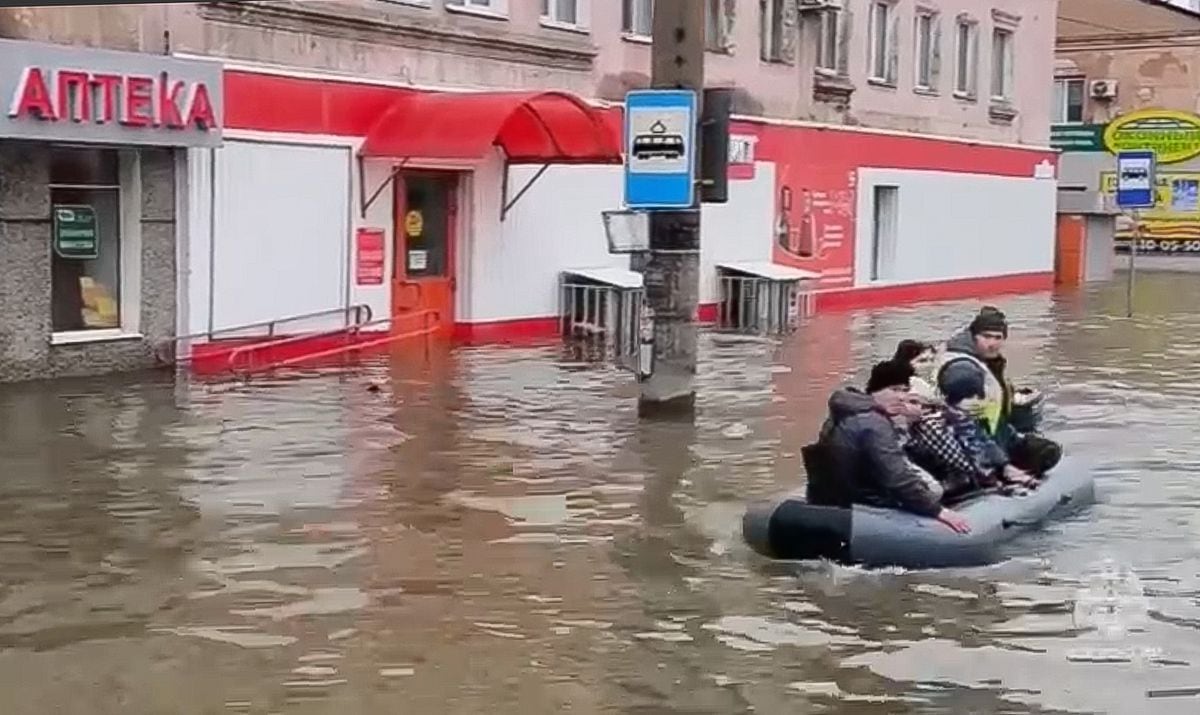Once in a generation: Why is the water authority rushing to open the Degania dam?
The Authority has set some landmarks at the Sea of Galilee, where it will be instructed to open the dam for the first time since 1995. But from Walla! NEWS indicates that this is significantly lower than was previously the case. The PA claims: A safety margin should be taken from the Red Line
Once in a generation: Why is the water authority rushing to open the Degania dam?
Photo: Shay Mizrahi, Kinneret AuthorityThe water level setpoints set to open the cereal dam are significantly lower than was previously acceptable - according to Walla! NEWS. The critical points, set by the Water Authority yesterday (Wednesday), represent situations in which the order to open the Degania dam, in accordance with the water level in the Sea of Galilee, will be given to prevent possible flooding in the surrounding communities. The low points compared to the winters in the past may lead to the opening of the Degania dam too early this year, for the first time since 1995, and to release water that is essential to the Israeli water economy.
At yesterday's meeting, the parameters were defined according to which the critical points were opened for the dam in relation to a set date in the season, the release of water from the Sea of Galilee and the probability of not crossing the Red Line. For example, it is determined that the Degania Dam will open if at the end of February (on February 29) the Sea of Galilee's forecast for the next five days passes the 209.3-m level (50 cm below the upper red line). Another landmark yesterday was a situation where March 21, the Sea of Galilee's forecast for the next five days will pass the 209.0-m level (20 cm below the upper red line).
However, a look at the Sea of Galilee data in the winter of early 2004 shows that the critical points decided yesterday were significantly lower than the Sea of Galilee that winter 16 years ago, and yet they did not open the dam and the lake level did not reach its upper level.
Read more on:
To prevent flooding: The situations in which the Degania dam will open for water transfer from the Sea of Galilee not only because of the rains: "The Visible Secret" that helps to increase the Sea of Galilee 70,000 people are not mistaken: Proven treatment for knee pain and back contentThe instructions define the water level in the Sea of Galilee where the dam will be opened by dates. Degania dam (Photo: Eli Ashkenazi)
Degania dam (Photo: Eli Ashkenazi)
On February 29, 2004, the Sea of Galilee was at 209,135 below the Mediterranean. For the next five days the level rose another five inches to reach 209,055. That is, at the beginning of March 2004, the Sea of Galilee was 24.5 cm higher than yesterday's critical point, and yet the dam did not open.
Another critical point for the current winter talks about the height of 209 on March 21, that is - 20 inches below the top red line. A winter 2004 examination shows that then, from March 21-26, the Sea of Galilee rose from 209.93 to 209.91 and the dam remained closed. As mentioned, even later, as the level approached the upper room, the dam did not open.
By the end of that winter, the Upper Sea of Galilee was six inches lower than the Upper Red Line. Each inch of water in the lake means 1.7 million cubic meters.
Higher critical points were also set in the winter of 1992 than those set this year: At the beginning of March 1992, the level reached 209.15 when the dam opened. So they let the Sea of Galilee cost 15 inches more than they would have this year, and only then opened the dam. At the height of that winter, the Sea of Galilee was at 208.79, that is - an exception of one inch.
A year later, the dam opened earlier because the Sea of Galilee entered the winter when the opening point of the level was very high. As early as winter, the level was only 1.62 meters from the maximum. Although water was released through the dam, at the end of winter the level was lower than the top line only 4 inches.
More in Walla! NEWS More in Walla! NEWSThe good will open to the north
To the full articleAway from the red line
The beginning of the winter of 1995 is an example of setting a critical point too low, leading to the early opening of the dam and the release of tens of millions of cubic feet of water. On February 9 of that year, the level was 209.28, which is 44 inches below the top red line. It was then decided that the dam should be opened. The dam was open for about nine days. In the end, the Sea of Galilee culminated that winter to a level of 209, which is about 20 inches from the maximum space it could reach.
The Water Authority noted yesterday that the decision to determine the critical points was made with the understanding that the dam cannot be opened until the Sea of Galilee reaches the upper red line, which is 208.8 m, because the rate of rise in the water level may be significantly faster than the water release capacity from the Sea of Galilee. cornflower.
The meaning of every inch - 1.7 million cubic feet of water. Sea of Galilee photography (Photo: Shay Mizrahi, Kinneret Authority)
Glacier photos from the Sea of Galilee February 3, 2020 (Photo: Shay Mizrahi Kinneret Authority, official website)
The dam regulates the flow of the Sea of Galilee south to the Jordan River and into the Dead Sea. In a particularly rainy year, as the Sea of Galilee rises and approaches the upper red line, the water authority must decide whether to approve the opening of the dam to prevent flooding in communities near the shores of the Sea of Galilee.
It has also been considered that the maximum opening of the dam has very large water flows and damage to the infrastructure and agricultural areas downstream of the Jordan River is beginning to occur. They also mentioned that in parallel with the release of water from the Sea of Galilee at the Degania Dam, there may be relatively short flow events in other streams that drain into southern Jordan - Yavneel River, Nahal Harod, the Yarmouk River and more. In order to minimize damage downstream of the Jordan River, the Water Authority said they were planning such a situation to reduce the flow of water from the Sea of Galilee to the downstream, thereby reducing the risk of damages to infrastructure located down the Sea of Galilee.






